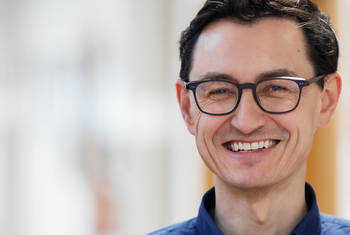Huan Zhao How does Hydrogen Behave in Aluminum Alloys?
Huan Zhao is a postdoctoral researcher at the Max-Planck-Institut für Eisenforschung, where she completed her PhD (2019). Her research focuses on hydrogen embrittlement and corrosion as well as grain boundary segregation and precipitation in aluminum alloys. In 2020, Zhao received the early career researcher award from the ICAA and in 2022, she won the Masing Memorial Prize, awarded by the German Society for Materials Science (DGM).
Area of Research
Materials Science
since 2019
2015-2019
Ph.D in Materials Engineering
Max Planck Society (more details)
Max-Planck-Institut für Eisenforschung
2015
Master of Science in Materials Engineering
Chongqing University
2011
Bachelor of Science in Materials Science and Engineering
Xi'an University of Science and Technology
 © Maximilian Dörrbecker
© Maximilian Dörrbecker
Max Planck Society
"The Max Planck Society is Germany's most successful research organization. Since its establishment in 1948, no fewer than 18 Nobel laureates have emerged from the ranks of its scientists, putting it on a par with the best and most prestigious research institutions worldwide. The more than 15,000 publications each year in internationally renowned scientific journals are proof of the outstanding research work conducted at Max Planck Institutes – and many of those articles are among the most-cited publications in the relevant field." (Source)
Institute
Max-Planck-Institut für Eisenforschung
The international team of the Max-Planck-Institut für Eisenforschung conducts advanced basic materials research related to the fields of mobility, energy, infrastructure, medicine and digitalisation. We focus on nanostructured metallic materials as well as semiconductors and analyse down to their atomic and electronic scales. This enables us to develop new, tailor-made structural and functional materials embracing their synthesis and processing, characterization and properties, as well as their response in engineering components exposed to real operating environments.
The dynamic structure of the institute and the very intensive cooperation between the departments and researcher teams worldwide are ideally suited to provide answers to the currently emerging global issues of CO2-reduced and sustainable production and manufacturing, the complete conversion of energy supply and automotive drive technology, the synergies between machine learning and materials research and production, and the need for new high-performance materials for safety, weight-reduced transport and functional innovations based on excellent basic research.
Map
Light, strong and abundant, aluminum and its alloys are widely used in constructions, consumer electronics, and for vehicles including cars, ships, and aerospace. In this video, HUAN ZHAO explores a phenomenon which results in the weakening of these materials, hydrogen embrittlement. Employing cryogenic-transfer atom probe tomography, Zhao is able to provide a three dimensional analysis of how hydrogen is located within the aluminum alloys’ microstructure. Identifying grain boundaries as a key site for hydrogen embrittlement, the research highlights possible strategies to both better understand and counteract material’s failure.
LT Video Publication DOI: https://doi.org/10.21036/LTPUB101059
Hydrogen trapping and embrittlement in high-strength Al alloys
- Huan Zhao, Poulami Chakraborty, Dirk Ponge, Tilmann Hickel, Binhan Sun, Chun-Hung Wu, Baptiste Gault and Dierk Raabe
- Nature
- Published in 2022








